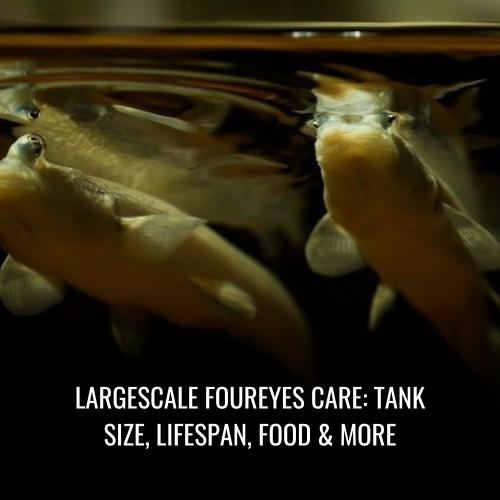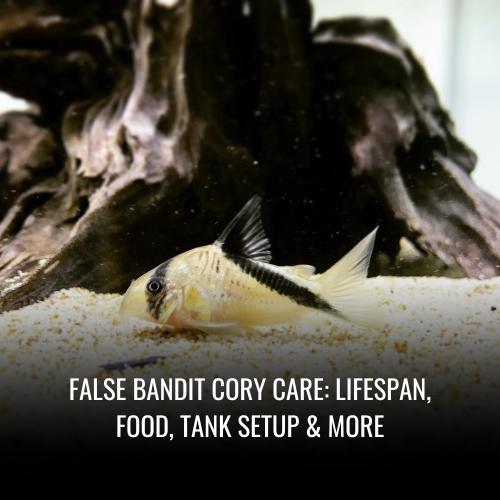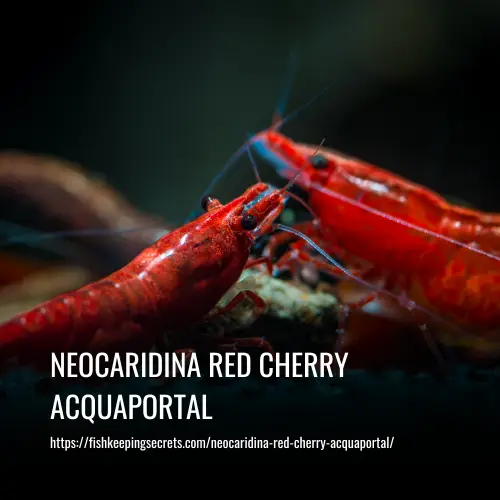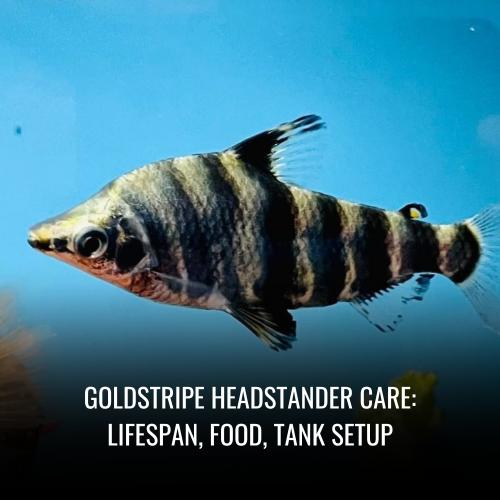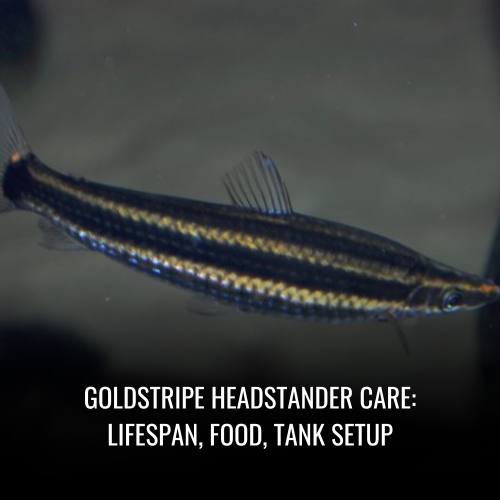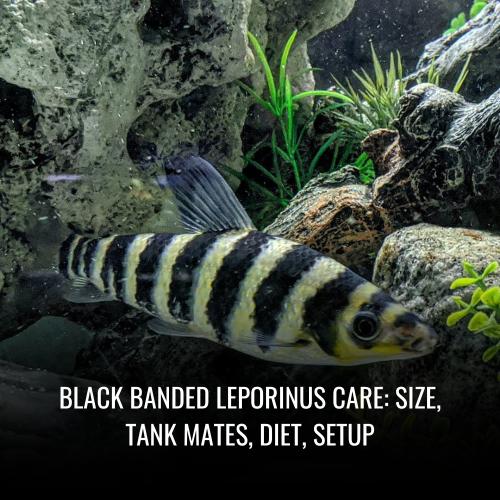Sepik glass perchlet Care: Lifespan, Food, Tank Setup
This post contains affiliate links. As an Amazon Associate, we earn from qualifying purchases.
The Sepik glass perchlet, scientifically known as Parambassis confinis, is a captivating fish species native to the freshwater streams of Papua New Guinea. Recognized for their tranquil disposition, these glass perchlets are an ideal addition to communal tanks.
Their usual size in aquariums is about 8-10 cm (3.15-3.94 inches), requiring specific water conditions to thrive, including a pH range of 7.5-8.5 and a water hardness of 2-12°N (35.71-214.29ppm). To ensure their well-being, a temperature setting of 22-28°C (71.6-82.4°F) is preferred.
Sepik Glass Perchlet Profile
| Attribute | Detail |
|---|---|
| Scientific Name | Parambassis confinis |
| Common Name | Sepik Glass Perchlet |
| Family | Ambassidae |
| Usual Size in Fish Tanks | 8-10 cm (3.15-3.94 inches) |
| Recommended pH Range | 7.5-8.5 |
| Recommended Water Hardness | 2-12°N (35.71-214.29ppm) |
| Recommended Temperature | 22-28°C (71.6-82.4°F) |
| Reproduction | Egg scatterers |
| Origin | Papua New Guinea |
| Temperament (Own Species) | Peaceful |
| Temperament (Other Fish) | Peaceful |
| Usual Place in Tank | Middle levels |
| Lifespan | 3-5 years |
| Tank Size Requirement | Dependent on group size |
| Filtration System | Required, well-filtered |
| Sexual Dimorphism | Subtle differences |
| Substrate Cleaning | Regular cleaning recommended |
In an aquarium setting, the Sepik glass perchlet proves to be an interesting species to observe and nurture, aligning closely with the interests of both novice and experienced fish enthusiasts.
Scientific Name
The Sepik glass perchlet, recognized scientifically as Ambassis sepikensis, is a unique fish species securely rooted in the freshwater ecosystems of Papua New Guinea. Inhabiting the Sepik River basin and its numerous tributaries, these small, transparent fish have adapted well to their lush environment.
| Taxonomic Details | Sepik Glass Perchlet |
|---|---|
| Family | Ambassidae |
| Scientific Name | Ambassis sepikensis |
| Described by | R. Fricke |
| Catalog Reference | Catalog of Fishes |
| Regional Endemism | Sepik River, Papua New Guinea |
| Notable Classification Feature | Belongs to Ambassidae with Asiatic glassfishes |
Average Size
The Sepik glass perchlet, an exquisite member of the freshwater aquarium community, possesses a modest size that captivates enthusiasts. Adult fish typically display an average length of 5 to 7 centimeters, with fully mature specimens reaching the upper limit of 7 centimeters.
As they progress from their juvenile stage, they start at about 5 centimeters before growing to their full size. When considering their weight, these adults are quite light, ranging from 3 to 5 grams.
| Sepik Glass Perchlet Size Details | |
|---|---|
| Juvenile Length | ~5 cm |
| Adult Length | 5 – 7 cm |
| Maximum Length | 7 cm |
| Adult Weight | 3 – 5 g |
Aquarium hobbyists must take note of these dimensions to ensure harmonious tank conditions. Tank mates and setup must be chosen with care to accommodate the Sepik glass perchlet’s size requirements, ensuring a thriving aquatic environment.
- Ensure tank mates are compatible with the perchlet’s size.
- The aquarium setup must allow for the fish’s full-grown size.
- Regular monitoring of water quality is essential for maintaining their health.
This information helps create a safe and comfortable habitat, paramount for sustaining the delicate balance needed for these small but fascinating fish.
Lifespan
| Sepik Glass Perchlet Lifespan Details | |
|---|---|
| Average Lifespan in Captivity | 3 – 5 years |
| Influencing Factors | Water quality, diet, tank mates |
| Key to Longevity | Proper care, suitable tank conditions, balanced diet |
Captivating aquarists with its delicate form, the Sepik glass perchlet (Ambassis agrammus) graces home aquariums with a life expectancy ranging from 3 to 5 years. Insights from the Journal of Fish Biology attest to the longevity of this small, carnivorous fish species when proper attention is given to their captive environment.
Factors crucial for extending the life of these tiny marine creatures include:
- Maintaining pristine water quality akin to their natural habitat.
- Providing a range of meaty foods that mimic their diet in the wild.
- Choosing non-aggressive tank mates to prevent stress.
As with all bony fishes, the specific care requirements—such as water hardness, regular water changes, and tank size—are integral to their well-being. Enthusiasts who dedicate time to understanding the peculiarities of the Sepik glass perchlet’s lifestyle will be rewarded with a vibrant and active aquatic companion for years to come.
Natural Habitat
| Natural Habitat of the Sepik Glass Perchlet | |
|---|---|
| Native Region | Sepik River basin, Papua New Guinea |
| Water Type | Freshwater and Brackish |
| Environment | Slow-moving rivers, streams, lagoons |
| Vegetation | Dense, with aquatic plants, roots, branches |
| pH Range | 6.0 – 7.5 (Slightly Acidic to Neutral) |
| Climate | Tropical, warm temperatures, high rainfall |
The Sepik glass perch, a species calling the tranquil waters of the Sepik River basin home, thrives in both the clear freshwater and the slightly saline brackish environments. Aquatic connoisseurs typically seek out these bony, Acanthopterygian fishes for their unique ability to adapt to various water conditions characteristic of Papua New Guinea’s tropical climate. The climate ensures warm temperatures and a consistent pattern of heavy rainfall.
Appearance
The Sepik glass perchlet, scientifically known as Ambassis sepikensis, presents a strikingly transparent figure in the underwater world. Its slender, elongated physique reaches the usual size of 6-7 cm, denoting a delicate and almost ethereal presence. Mirroring its freshwater habitat, the fish boasts a silver or greenish body hue, contrasted by a pronounced black dot placed upon the operculum—a discerning mark of its species.
The intricate fins of the perch add to its mystique; they are predominantly clear and may possess subtle hints of color. Such nuances in appearance are not just ornamental; sexual dimorphism is pronounced, with males exhibiting more vivid coloring and fin extensions that become exaggerated during periods of courtship.
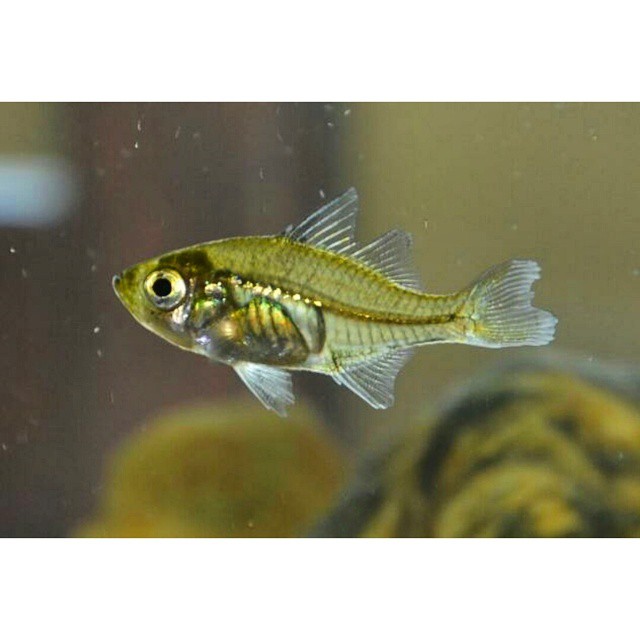
Behavior & Temperament
The Sepik glass perchlet, also known as Parambassis confinis, is characterized by its peaceful and non-aggressive demeanor, making it an excellent resident of a community aquarium. These fish are naturally inclined to be tranquil and agreeable, spending their days actively swimming and foraging within their habitat. Their gregarious nature and tendency to shoal underscore the need for a socially conducive environment, adding to the dynamic tapestry of life beneath the water’s surface.
In a thoughtfully curated aquarium, the Sepik glass perchlet offers a window into a delicate ballet of underwater harmony. However, to maintain this peaceful atmosphere, it is essential to carefully select their tank mates, as overly boisterous or large fish may cause the Sepik glass perchlet undue stress. Observations of their behavior in natural and aquarium settings provide valuable insights into how to best accommodate their tranquility and comfort.
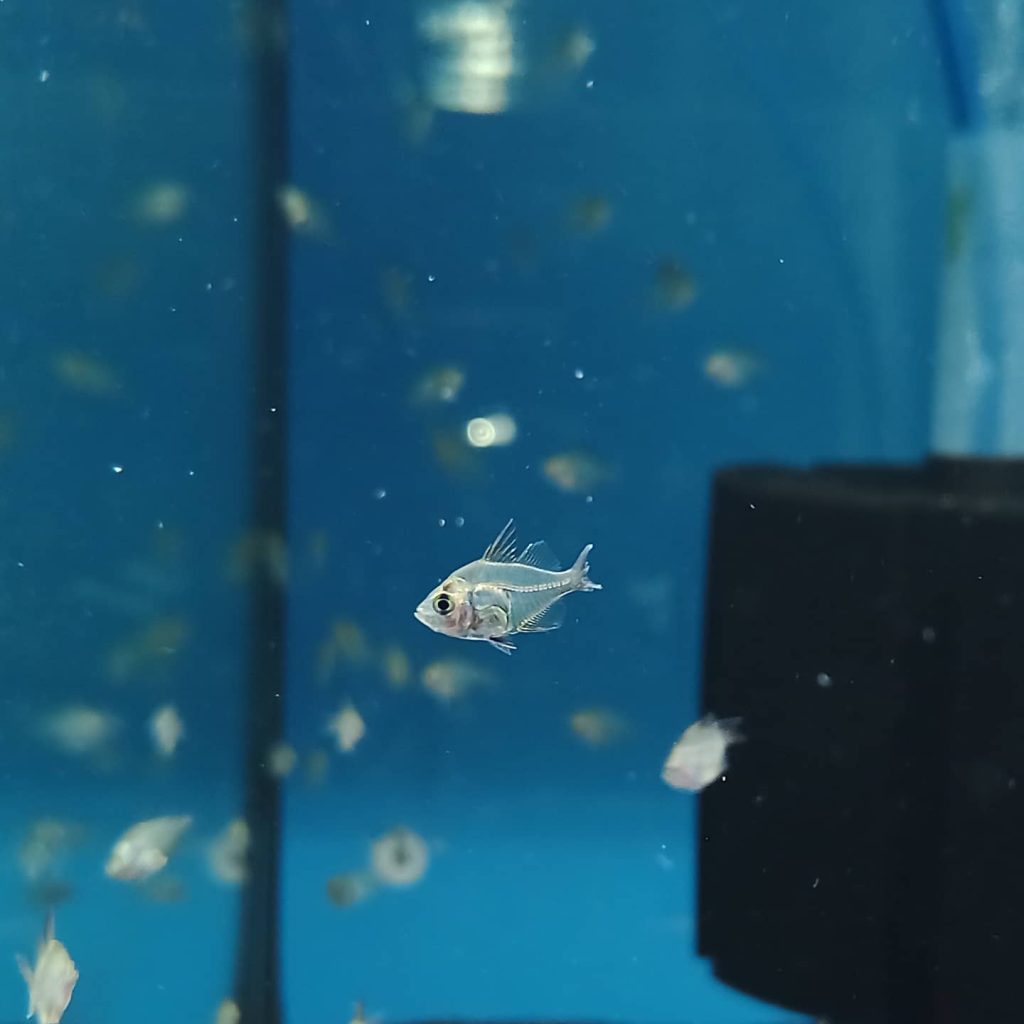
Are Sepik glass perchlet Fin Nippers?
The Sepik glass perchlet is not typically known for fin-nipping behavior. With their gentle nature, they coexist peacefully alongside other species, rather than engaging in the nipping of fins. This congenial attitude ensures a harmonious life among their aquatic neighbors, making them a suitable addition to a mixed-species tank.
It’s important, however, for aquarists to be cognizant of the overall community dynamics, as adding excessively aggressive species can disrupt the balance and incite stress among the more peaceful inhabitants.
Are Sepik glass perchlet Aggressive To Each Other & Other Fish?
Interactions between Sepik glass perchlets and other fish, including those of their kind, are marked by a pervading sense of calm. They do not display aggression towards each other or different species, endorsing their placement within a community tank.
However, during breeding periods, one might observe a shift towards territorial behavior, but providing sufficient cover and hiding spaces can easily mitigate these tendencies. Overall, their placid nature makes them agreeable tank mates within the aquatic milieu.
Are Sepik glass perchlet Friendly To Each Other & Other Fish?
The Sepik glass perchlet stands as a paragon of friendly behavior, often seeking the company of their conspecifics and coexisting amiably with other non-aggressive fish. They flourish in environments where the company is plentiful and aggression is scarce.
Ensuring an appropriate selection of tank mates and avoiding the introduction of predatory or overly assertive species is instrumental in preserving the Sepik glass perchlet’s friendly inclination.
Are Sepik glass perchlet Schooling Fish?
Indeed, the Sepik glass perchlet exhibits a strong schooling behavior that is deeply rooted in their natural instincts for survival and social interaction. Observations in the wild highlight their preference for the collective, a tendency that translates into an aquarium setting.
When kept in groups, these fish display fascinating synchronized swimming and a sense of cohesion that not only adds to their visual allure but also signifies a healthy state of existence.
Can You Have Just One Sepik glass perchlet In The Tank?
While it is physically possible to house a solitary Sepik glass perchlet, it is not recommended from a welfare perspective. A lone perchlet may exhibit signs of stress and reclusive behavior, which could negatively affect their health. It is through the company of their own kind that they express their full repertoire of behaviors and display optimal well-being.
Do Sepik glass perchlet Need To Be In Groups?
To emulate the natural behavioral patterns of the Sepik glass perchlet and ensure their happiness in captivity, it is best to keep them in groups. A shoal of at least six individuals provides the social framework necessary for these fishes to thrive.
Group living enhances their vibrant coloration, encourages natural spawning activities, and minimizes stress levels, all of which contribute to the overall health and vitality of these enchanting creatures.
Food & Diet
Sepik glass perchlets are captivating with their dietary preferences, revealing their predominantly carnivorous nature. These fish flourish when their diet comprises live or frozen prey reminiscent of their natural hunting grounds in the warm waters of Papua New Guinea. Providing a varied and meaty menu is crucial for their health, mimicking the nutritional richness of their indigenous habitats.
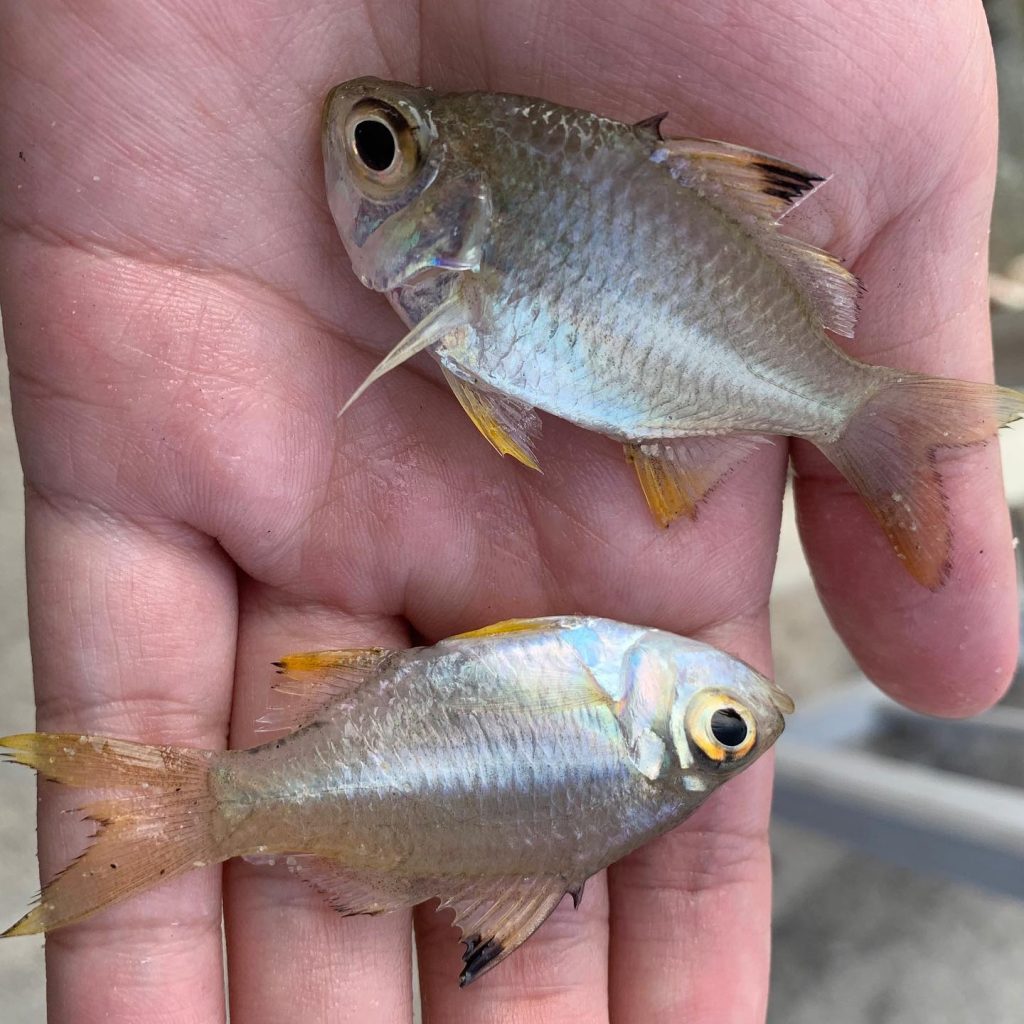
Do Sepik Glass Perchlets Eat Algae?
Unlike some of their aquatic counterparts, Sepik glass perchlets do not rely on algae as a staple in their diet. With a natural inclination towards carnivorous consumption, these fish prefer feasting on a spread of small crustaceans, insects, and other petite aquatic creatures. Although it’s conceivable for them to ingest minute quantities of algae incidentally present in their tanks, it should not be considered a significant component of their diet.
Do Sepik Glass Perchlets Eat Shrimp?
Shrimp indeed feature prominently on the menu for Sepik glass perchlets. Their carnivorous diet in the wild routinely includes such offerings, revealing the necessity of incorporating shrimp into their captivity feeding routines. Providing them with live or frozen shrimp not only satisfies their natural palate but also encourages their instinctive foraging behaviors.
Do Sepik Glass Perchlets Eat Bloodworms?
Incorporating bloodworms into the diet of Sepik glass perchlets is a decision met with enthusiasm by these fish. These worms serve as a nutrient-dense food source, rich in the proteins necessary for the health and development of these bony fishes. Regular servings of bloodworms can enhance the Sepik glass perchlet’s vitality and satiate their carnivorous cravings.
Do Sepik Glass Perchlets Eat Mosquito Larvae?
Feeding on mosquito larvae is a natural behavior for Sepik glass perchlets, and it rightfully takes its place as a preferred delicacy in their diet. These larvae not only offer a protein-laden bite but also encourage the perches natural predilection for hunting, supporting their physical and psychological well-being within the confines of an aquarium.
Do Sepik Glass Perchlets Eat Planaria?
While some fish might find planaria to be a suitable snack, there is scant evidence to suggest that Sepik glass perchlets specifically seek out these flatworms as a food source. Instead, their dietary focus is channeled towards more common aquatic delicacies that provide the richness and diversity they require for a balanced and nutritious intake.
Do Sepik Glass Perchlets Eat Plants?
Owing to their carnivorous habits, Sepik glass perchlets do not express a notable interest in plant consumption. While their habitat may occasionally present the opportunity for an incidental graze on plant matter, their primary diet consists of various meaty food items that are essential to fulfill their carnivorous dietary demands in both natural and tank environments.
Sexing: Male vs Female
Discerning the gender of Sepik glass perchlets can be quite a subtle task for even the seasoned aquarist. Generally, the key to differentiating males from females is the body shape, with females often presenting a rounder, plumper profile when compared to their male counterparts. Unlike other fish species, these perchlets do not showcase distinct sexual dimorphism through colors or fin shapes.
What you may need to do is engage in consistent observation, as physical differences are not always obvious and may become clearer over time. Monitoring their behaviors, such as breeding habits, can sometimes provide additional clues.
Given these challenges, seeking guidance from professional breeders or experienced fish keepers is recommended to ensure correct sex identification. Their expertise proves invaluable, particularly when breeding Sepik glass perchlets is the goal.
Here’s a simplified reference to aid in sexing Sepik glass perch lets:
| Trait | Male Sepik Glass Perchlet | Female Sepik Glass Perchlet |
|---|---|---|
| Body Shape | Streamlined, less pronounced | Plumper, fuller silhouette |
| Color & Fins | No discernible difference | No discernible difference |
| Behavior | May not be distinctively unique | May not be distinctively unique |
It’s worth noting that these are general observations, and exceptions may occur.
Sepik glass perchlet Tank Mates
When considering tank mates for Sepik glass perchlet, fostering a calm aquatic community is key. These tranquil fish thrive alongside other peaceful species, making them splendid companions for danios, rasboras, and petite catfish. They are also compatible with serene bottom-dwellers such as Corydoras and small loaches, which prefer the tank’s lower levels, allowing for a well-balanced aquarium.
Ensure you house Sepik glass perchlets with other non-aggressive fish to avoid any potential stress or competition, particularly during feeding times, as they are relatively small. Large or belligerent species should be avoided to maintain a serene environment.
Here’s a quick reference for compatible tank mates:
| Ideal Tank Mate | Region of Tank Occupied |
|---|---|
| Danios | Middle to Upper Levels |
| Rasboras | Middle Levels |
| Small Catfish | Bottom Levels |
| Corydoras | Bottom Levels |
| Small Loaches | Bottom Levels |
Remember to maintain a peaceful and stable environment suitable for all your aquarium residents.
Aquarium Setup
Aquarium setup is a crucial factor when creating a hospitable environment for Sepik glass perch. These delicate fish require precise conditions to mirror their natural habitat and encourage their well-being in captivity.
Ensuring you have a proper setup is vital for their health and happiness, offering them a space where they can swim, hide, and exhibit natural behaviors. Here’s how you can achieve the ideal conditions for your Sepik glass perch.
Ideal Tank Size
The Sepik glass perchlet is a lively species that flourishes in a spacious environment. An ideal starting point for your tank is a minimum capacity of 20 gallons, which provides ample swimming area and opportunities for establishing hiding spots that are essential for these fish.
To further encourage their social nature, consider a tank ranging from 20 to 30 gallons, suitable for ensuring enough room for interaction and exploration. For keeping a group, upgrading to a 40-gallon tank or more is advisable; this allows for adequate territory and lessens chances of conflict, facilitating a serene aquatic society.
Ideal Water Parameters
Sepik glass perchlets thrive in consistent water conditions that mimic their tropical backgrounds. The water should be slightly acidic to neutral, with a pH level ranging from 6.5 to 7.5. Temperature is another critical parameter, with an optimal range between 75°F to 80°F (24°C to 27°C).
Filtration
For Sepik glass perchlet, the quality of water can significantly impact their health. Therefore, proper filtration is non-negotiable. Aim for a filtration system that combines mechanical, biological, and chemical filtration to effectively manage waste and aid in a balanced aquatic ecosystem.
Canister filters are often the go-to choice for a Sepik glass perchlet setup. They’re adept at accommodating high filtration needs while allowing gentle water flow, crucial for these fishes’ preference for tranquil waters. Regular maintenance, including media cleaning and replacement, will keep the tank environment pristine for your aquatic companions.
Lighting
The lighting in a Sepik glass perchlet aquarium should be subdued, emulating the dappled sunlight of their native habitat. Utilizing floating plants can help provide the necessary shade, helping these fish feel secure and comfortable in their surroundings.
Opt for adjustable LED lighting where brightness levels can be tailored to meet the needs of your Sepik glass perchlet. Ensure you create a gradual shift from daylight to moonlight settings to mimic natural light cycles, minimizing the stress on your fish due to abrupt light changes.
Common Possible Diseases & Prevention
It seems that the response has been cut off. If you have any specific requests or if you’d like me to continue writing in a particular direction, please feel free to let me know!
Disease Prevention:
- Maintain excellent water quality with regular changes.
- Keep water parameters, including temperature and pH, stable.
- Quarantine and monitor new fish for signs of illness before tank introduction.
- Feed a balanced diet rich in nutrients to boost overall fish health.
Common Diseases:
- Ich (White Spot Disease)
- Fin Rot
- Bacterial Infections
Early Detection and Intervention:
- Observe your Sepik glass perchlet routinely for abnormal behavior or changes in appearance.
- Look out for telltale disease signs, such as white spots, frayed fins, or lethargy.
Taking these preventive steps will reduce the risk of disease among your Sepik glass perchlet, ensuring a thriving environment for your aquatic pets.
Breeding Sepik Glass Perchlet In Aquarium
Breeding the Sepik glass perchlet requires attention to detail and specific tank conditions. A dedicated breeding tank with low water levels and fine-leaved plants can create the ideal environment for their spawning process.
Here are the key parameters for a successful breeding setup:
| Parameter | Ideal Condition |
|---|---|
| pH Level | 7.5 – 8.5 |
| Water Hardness | 2 – 12°N (35.71 – 214.29ppm) |
These fish are known as egg scatterers, laying large quantities of eggs amidst the aquatic foliage. Remember, once spawning is complete, promptly remove the parent fish to prevent them from eating the eggs.
For the fry’s growth, a diet rich in meaty foods post-hatching is crucial. This nutritional support will aid in their development, setting the stage for a new generation of the Sepik glass perchlet.
Are Sepik glass perchlets Easy To Keep?
Sepik glass perchlets, scientifically called Parambassis confinis, are a popular choice for both novice and experienced aquarium enthusiasts due to their undemanding nature. They have earned a reputation for being easy to care for, making them an appealing addition to many home aquariums.
Notable Aspects of Sepik Glass Perchlet Care:
- Temperament: Known for their peaceful demeanor, they coexist harmoniously with other compatible species.
- Water Adaptability: These fish can thrive in both freshwater and slightly brackish conditions.
- Hardiness: Sepik glass perchlets are not easily succumbed to diseases and are relatively tolerant of water condition fluctuations.
- Manageable Size: Growing to a moderate size of 8-10 cm, they are well-suited for smaller aquarium setups.
- Diet: With a preference for meaty foods and a non-fussy diet, they are straightforward to feed.
These attributes contribute to the Sepik glass perchlet’s status as an easy-to-keep species, ideal for a range of aquarium owners. Their hardiness and adaptability are particularly beneficial for those who might not be able to closely monitor the tank at all times.
Are Sepik glass perchlet Sensitive To Water Changes?
Despite their general hardiness, Sepik glass perchlets have a threshold for what they can tolerate concerning water parameter changes. These bony fishes prefer stability, meaning any sudden or significant shifts in their environment can be taxing on their well-being.
Potential Effects of Sudden Water Changes:
- Stress and health issues due to abrupt temperature, pH, or hardness adjustments.
- Behavioral and feeding disruptions, possibly leading to illness.
- A weakened immune system, increasing susceptibility to diseases.
Given their sensitivity, aquarists must implement gradual water changes and avoid drastic modifications to the tank’s conditions. A steady hand in maintaining the tank’s balance goes a long way in preserving the health of Sepik glass perchlets.
Are Sepik glass perchlets Sensitive To Ammonia?
Ammonia sensitivity is a significant concern when keeping Sepik glass perchlets. This transparent species, like many other aquatic creatures, is vulnerable to the harmful effects of high ammonia levels typically caused by fish waste, uneaten food, and decaying organic matter.
Importance of Ammonia Management:
- Severe Discomfort: Exposure to ammonia can quickly lead to discomfort, illness, and gill damage.
- Stress and Disease: Elevated ammonia levels may stress the fish, which can compromise their immune systems.
- Breathing Difficulty: Ammonia poisoning can affect their breathing, leading to serious health problems.
Ensuring a well-cycled aquarium equipped with effective biological filtration is essential to mitigate the risks associated with ammonia. Regularly testing the water and acting swiftly to correct any rise in ammonia levels is a critical aspect of caring for Sepik glass perchlets.
Are Sepik glass perchlets Sensitive To Copper?
Copper sensitivity is another consideration for Sepik glass perchlets or Parambassis confinis. These fish are particularly vulnerable to copper, which can be introduced into aquariums through various means, including some treatments for parasites and algae control.
Copper Exposure Risks:
- Gill Damage: Copper can inflict damage on the delicate gill tissues of Sepik glass perchlets, impairing their respiration.
- Stress: Low levels of copper can induce stress and lead to additional health issues.
- Medications and Treatments: Products containing copper should be used with caution to avoid potential toxicity.
Routine water testing to monitor copper levels is crucial for ensuring that Sepik glass perchlets are not exposed to harmful concentrations. Aquarists should be particularly mindful of the source and contents of any additives used in the tank to maintain the safety and health of their Sepik glass perchlets.

